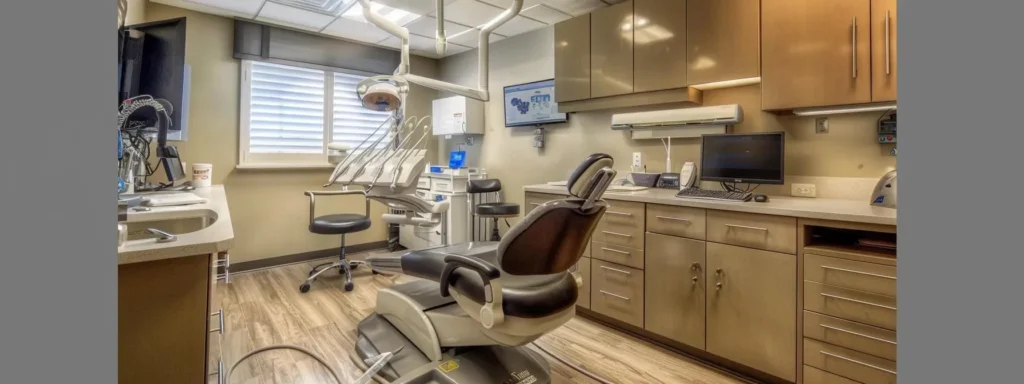Getting your teeth whitened shouldn’t feel like torture. Unfortunately, many people experience tooth sensitivity during or after whitening treatments, and this discomfort can really put a damper on what should be an exciting transformation. The good news is that sensitivity during whitening is completely preventable when you know what you’re doing.
The reality is that tooth sensitivity happens because whitening agents penetrate your enamel to reach the inner layers of your teeth. When these bleaching compounds encounter your dental nerves, they can cause that sharp, uncomfortable sensation you might feel when sipping hot coffee or cold water after treatment.
Understanding why sensitivity occurs is the first step toward preventing it. Once you know what’s happening inside your teeth during whitening, you can take smart steps to protect yourself and ensure your whitening experience is comfortable from start to finish.
What Actually Causes Sensitivity During Whitening
The science behind whitening sensitivity is pretty straightforward, but knowing the details helps you understand why certain prevention strategies work so well. It all comes down to how bleaching agents interact with the structure of your teeth and your individual risk factors.
Peroxide based whitening agents work by penetrating through your tooth enamel to break down stain molecules. During this process, the peroxide can also reach the tiny tubules that lead to your tooth’s nerve center. When these nerves are exposed to the whitening agent, they can become temporarily irritated and hypersensitive.
Your individual risk for sensitivity depends on several factors, including the current condition of your enamel, any existing dental work, and even your personal pain threshold. People with naturally thin enamel, exposed tooth roots, or previous dental procedures often experience more sensitivity than others.
The duration of sensitivity varies too. Most people find that any discomfort subsides within 24 to 48 hours after treatment, but some individuals may experience lingering sensitivity for several days. Understanding your personal risk profile helps you prepare appropriately and choose the right prevention strategies.
Individual Risk Factors You Should Know About
Not everyone experiences whitening sensitivity the same way, and understanding your personal risk factors can help you take targeted steps to prevent discomfort. Some people sail through whitening treatments without any issues, while others need extra precautions to stay comfortable.
Your dental history plays a huge role in sensitivity risk. If you’ve had dental work like fillings, crowns, or root canals, these areas might respond differently to whitening agents. Previous orthodontic treatment, teeth grinding habits, or a history of dental sensitivity can also increase your chances of experiencing discomfort.
The current condition of your enamel is another major factor. Enamel that’s been weakened by acid erosion, aggressive brushing, or natural wear is more likely to allow whitening agents to penetrate quickly and reach sensitive areas. Age can also be a factor, as enamel naturally becomes thinner over time.
Lifestyle factors like your diet and oral hygiene habits can influence sensitivity too. If you regularly consume acidic foods and drinks, or if you brush too aggressively, your enamel might be more prone to sensitivity during whitening treatments.
The Problem with One Size Fits All Whitening Products
Here’s where a lot of people run into trouble: over the counter whitening products are designed for the masses, not for your specific needs and sensitivity level. These generic products can cause unnecessary discomfort because they don’t account for individual differences in enamel thickness, dental history, or sensitivity thresholds.
Most drugstore whitening kits use standardized peroxide concentrations that aim for maximum whitening effect rather than user comfort. This approach can overexpose your teeth to bleaching agents, leading to sensitivity that could have been avoided with a more personalized approach.
The fit of generic whitening trays is another problem. When trays don’t fit properly, whitening gel can leak onto your gums and soft tissues, causing irritation and increasing overall sensitivity. Poor fitting trays also don’t distribute the whitening agent evenly, which can lead to uneven results and unnecessary exposure to sensitive areas.
Without professional guidance, you’re essentially guessing about what concentration and application time will work best for your teeth. This trial and error approach often results in either inadequate whitening or uncomfortable sensitivity that could have been prevented with proper customization.
Smart Professional Strategies for Comfort
Working with a dental professional completely changes the whitening game when it comes to preventing sensitivity. Professional supervision means your treatment can be customized to your specific needs and adjusted in real time if any discomfort develops.
Professional whitening strategies focus on finding the perfect balance between effectiveness and comfort for your unique situation. Your dentist can determine the optimal peroxide concentration that will give you great results without causing unnecessary sensitivity. This personalized approach often means better outcomes with less discomfort.
Custom fitted whitening trays make a huge difference in both comfort and results. When your trays fit perfectly, the whitening gel stays exactly where it should and doesn’t irritate your gums or leak onto sensitive areas. This precision application reduces sensitivity while ensuring even, consistent whitening.
Environmental factors during treatment can also be controlled in a professional setting. Things like temperature, application time, and post treatment care can all be optimized to minimize sensitivity while maximizing your whitening results.
Recognizing When Sensitivity Becomes a Concern
While some mild sensitivity after whitening is normal and expected, it’s important to know when discomfort crosses the line into something that needs professional attention. Understanding the difference between normal sensitivity and problematic symptoms helps you respond appropriately.
Normal post whitening sensitivity typically feels like a mild zing or brief discomfort when your teeth encounter hot or cold temperatures. This sensation should be manageable and should gradually decrease over 24 to 48 hours after treatment. Most people can handle this level of discomfort with over the counter pain relief if needed.
Warning signs that indicate you should contact your dentist include persistent pain that lasts more than 72 hours, sensitivity that seems to be getting worse rather than better, or pain that’s severe enough to interfere with eating, drinking, or sleeping. Sharp, shooting pains or constant throbbing are also red flags.
If you experience any of these concerning symptoms, don’t try to tough it out. Your dentist can evaluate what’s causing the excessive sensitivity and adjust your treatment plan accordingly. Sometimes a simple change in gel concentration or application timing can resolve the issue completely.

Professional Support and Real Time Adjustments
One of the biggest advantages of professional whitening is having access to immediate support and adjustments when needed. Beverly Hills Aesthetic Dentistry provides comprehensive oversight throughout your whitening journey, ensuring your comfort is prioritized every step of the way.
Professional monitoring means your treatment can be modified in real time if you experience unexpected sensitivity. This might involve adjusting the concentration of whitening gel, changing the application time, or incorporating additional desensitizing measures into your treatment plan.
The ability to customize your treatment based on your response is invaluable for people who are prone to sensitivity. Rather than abandoning whitening altogether, you can work with your dental team to find an approach that works for your specific needs and comfort level.
Ongoing support extends beyond the treatment itself to include guidance on post whitening care, recommendations for maintaining your results, and strategies for preventing sensitivity during future touch up treatments.
Essential Prevention Strategies That Actually Work
Preventing whitening sensitivity starts well before your actual treatment begins. The most effective strategies involve preparing your teeth for whitening and following specific protocols during and after treatment to minimize discomfort.
Proven techniques for preventing and managing whitening sensitivity include multiple approaches that work together:
- Pre treatment preparation: Using desensitizing toothpaste for two weeks before whitening to strengthen tooth nerves
- Gentle oral hygiene: Switching to a soft bristled toothbrush and avoiding abrasive dental products during treatment
- Dietary modifications: Avoiding extremely hot, cold, or acidic foods and beverages for 48 hours after whitening
- Professional grade products: Using dentist recommended desensitizing gels or rinses before and after treatment
- Gradual treatment approach: Starting with shorter application times or lower concentrations and building up gradually
These prevention strategies are most effective when used together as part of a comprehensive plan rather than trying to rely on just one approach. The key is consistency and following through with all recommended precautions.
Smart Lifestyle Choices During Whitening
Your daily habits during whitening treatment can significantly impact your comfort level and the success of your results. Making smart choices about what you eat, drink, and how you care for your teeth can prevent sensitivity and help your whitening last longer.
Temperature awareness is crucial during the first few days after whitening. Your teeth may be more sensitive to hot and cold temperatures, so choosing room temperature beverages and avoiding ice cream or hot soup can prevent uncomfortable sensations. This temporary adjustment is worth it for long term comfort.
Your oral hygiene routine might need some modifications during whitening treatment. Using a soft bristled toothbrush and avoiding whitening toothpastes or mouthwashes with alcohol can prevent additional irritation. Gentle brushing technique becomes even more important when your teeth are in a temporarily sensitive state.
Timing your whitening treatments strategically can also help minimize disruption to your daily life. Many people find that doing whitening treatments in the evening allows any initial sensitivity to subside overnight, so they wake up feeling more comfortable.
Advanced Techniques for Sensitive Teeth
If you’ve had sensitivity issues with whitening in the past, or if you know you have naturally sensitive teeth, there are advanced techniques that can help you achieve great whitening results without discomfort. These approaches require professional supervision but can make whitening possible for even the most sensitive patients.
Customized treatment protocols can be designed specifically for people with sensitivity concerns:
- Modified gel formulations: Lower peroxide concentrations or different bleaching agents that are gentler on sensitive teeth
- Extended treatment timelines: Longer treatment periods with shorter daily applications to achieve gradual results
- Alternating desensitization: Incorporating desensitizing treatments between whitening sessions to maintain comfort
- Targeted application: Focusing whitening on less sensitive areas while protecting problematic zones
- Professional grade barriers: Using special gels or materials to protect sensitive areas during treatment
These advanced techniques allow virtually anyone to benefit from professional whitening, regardless of their sensitivity history. The key is working with experienced professionals who understand how to modify treatments for individual needs.
Your Path to Comfortable Whitening
Achieving a brighter smile doesn’t have to involve suffering through sensitivity and discomfort. With the right preparation, professional guidance, and appropriate prevention strategies, you can enjoy a whitening experience that’s both effective and comfortable from start to finish.
The most successful whitening experiences happen when you take a proactive approach to sensitivity prevention rather than trying to manage discomfort after it occurs. This means starting with proper preparation, choosing professional supervision, and following through with recommended care protocols.
Beverly Hills Aesthetic Dentistry specializes in creating personalized whitening plans that prioritize your comfort while delivering exceptional results. Our comprehensive approach ensures that sensitivity concerns don’t prevent you from achieving the bright, confident smile you deserve. Ready to experience whitening without the worry? Contact us today to learn how our customized approach can give you beautiful results in complete comfort.
Don’t wait to transform your smile! Schedule a consultation with the best dentist in Beverly Hills, CA, Dr. Jamielynn Hanam-Jahr. Your journey to a brighter, more confident smile starts here.
Schedule Your Consultation Today!
Beverly Hills Aesthetic Dentistry
Get Directions Here 435 N Bedford Dr #414, Beverly Hills, CA 90210
See More Reviews From Beverly Hills Aesthetic Dentistry. View information about local places in our community. Get driving directions to Beverly Hills Aesthetic Dentistry.
Frequently Asked Questions
How can I prevent sensitivity when whitening my teeth?
Start using desensitizing toothpaste about two weeks before your whitening treatment and avoid extremely hot or cold foods for 48 hours after each session. Professional supervision also allows for customized gel concentrations and application times that minimize sensitivity while maximizing results. Your dentist can recommend specific products and techniques based on your individual sensitivity level.
Is it normal for my teeth to be sensitive after whitening?
Yes, mild sensitivity for 24 to 48 hours after whitening is completely normal and expected. This usually feels like brief discomfort when consuming hot or cold items. However, if sensitivity persists beyond 72 hours, becomes severe, or interferes with daily activities, you should contact your dentist for evaluation and possible treatment adjustments.
Can whitening damage my enamel and cause permanent sensitivity?
Professional whitening treatments are safe and don’t damage healthy enamel when performed correctly. Temporary sensitivity is different from enamel damage and typically resolves completely within a few days. Working with a dentist ensures your treatment is properly customized to protect your enamel while achieving optimal whitening results safely and comfortably.
Related Articles
Tooth Whitening
Professional Teeth Whitening Methods
Teeth Whitening Techniques
At-Home Teeth Whitening
Natural Teeth Whitening
Teeth Whitening Safety and Risks
Teeth Whitening Maintenance




